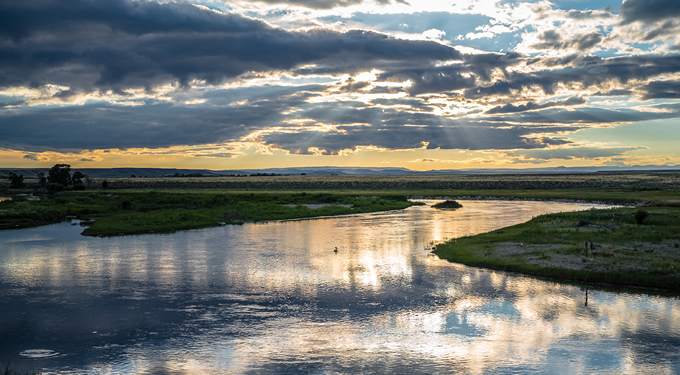River basins don’t get much more complicated than the Colorado – seven states, two countries, 30 Tribal nations, 11 National Parks, and a $1.4 trillion economy span its 247,000 square mile reach, not to mention the countless species of wildlife that rely on the river and its tributaries. Yet, while not perfect, the management of the Colorado River Basin is guided by “The Law of the River,” a series of agreements, treaties, and a few court cases meshed together to keep the peace. For more than 100 years, managers of the Colorado River, including the Basin states of Arizona, California, Colorado, Nevada, New Mexico, Utah, and Wyoming, along with the Federal government, have worked together to manage the river with varying degrees of success.
However, a critical set of rules for how the river is managed is set to expire at the end of this year, and with warming temperatures, unpredictable precipitation, and a growing population across the Southwest all contributing to diminished river flows, the need for new guidelines is urgent. In times of crisis, the states and federal government have been forced to forge short-term, often emergency agreements to conserve water and prevent the system from crashing overall. And for the past two years, negotiators have been working to determine new guidelines for how states and the federal government will manage water shortages and reservoir levels after 2026. A final plan for the new guidelines must be in place by October 2026, when the new “water year” starts and the implementation of the current rules expires.

Let’s stay in touch!
We’re hard at work in the Southwest for rivers and clean water. Sign up to get the most important news affecting your water and rivers delivered right to your inbox.
Last summer, in an attempt to encourage further collaboration and progress, the Department of the Interior set a deadline of November 11, 2025, for the states to come to an agreement. Despite deliberate, concerted effort right up to the deadline, the states have not reached consensus on a path forward. This stalemate is very concerning, as the communities, economies, and ecosystems that rely on the river need certainty around how the system will be managed as we prepare for a hotter, drier future. Management decisions must be grounded in sound science, investments in on-the-ground projects must be made, and efforts to build resilience in communities and ecosystems and expand conservation across the Basin must be pursued. Further, we must ensure that tribal voices are included in decision-making and that any decisions prioritize the health of the river itself. When we don’t consider the needs of the river, everything else that depends upon it is at risk.
So, where are we now? In a joint statement, the Basin states and the federal government committed to keep striving to reach a consensus, and we applaud their efforts and determination to keep at it. We strongly encourage the states to remain at the table in a spirit of collaboration and shared sacrifice, and the federal government to continue its leadership to hold the process together.

Time is of the essence as the river can no longer sustain all the demands expected of it while we engage in inter-basin political squabbles. Like any complex negotiation, there must be a spirit of honest give and take, with the truest of intentions to find a holistic solution for the river. The river needs flexible tools, inspired solutions, and long-term investments to help communities, agricultural interests, and Tribes prepare for the impacts of drought while ensuring comprehensive water security. And ultimately, we must remember the river when it comes to forging these agreements and reducing risk to the system overall. There is no time to waste – we must act now to sustain the Colorado River.

The Colorado River Cannot Wait While We Debate (or Litigate) Its Future — Solutions Are Needed Now
In response to the news that the seven Colorado River states have not met the Bureau of Reclamation’s deadline to reach agreement on a post-2026 operating framework for the river, conservation and sportsmen groups American Rivers, National Audubon Society, Environmental Defense Fund, The Nature Conservancy, Theodore Roosevelt Conservation Partnership, Trout Unlimited, and Western Resource Advocates released a joint statement.


